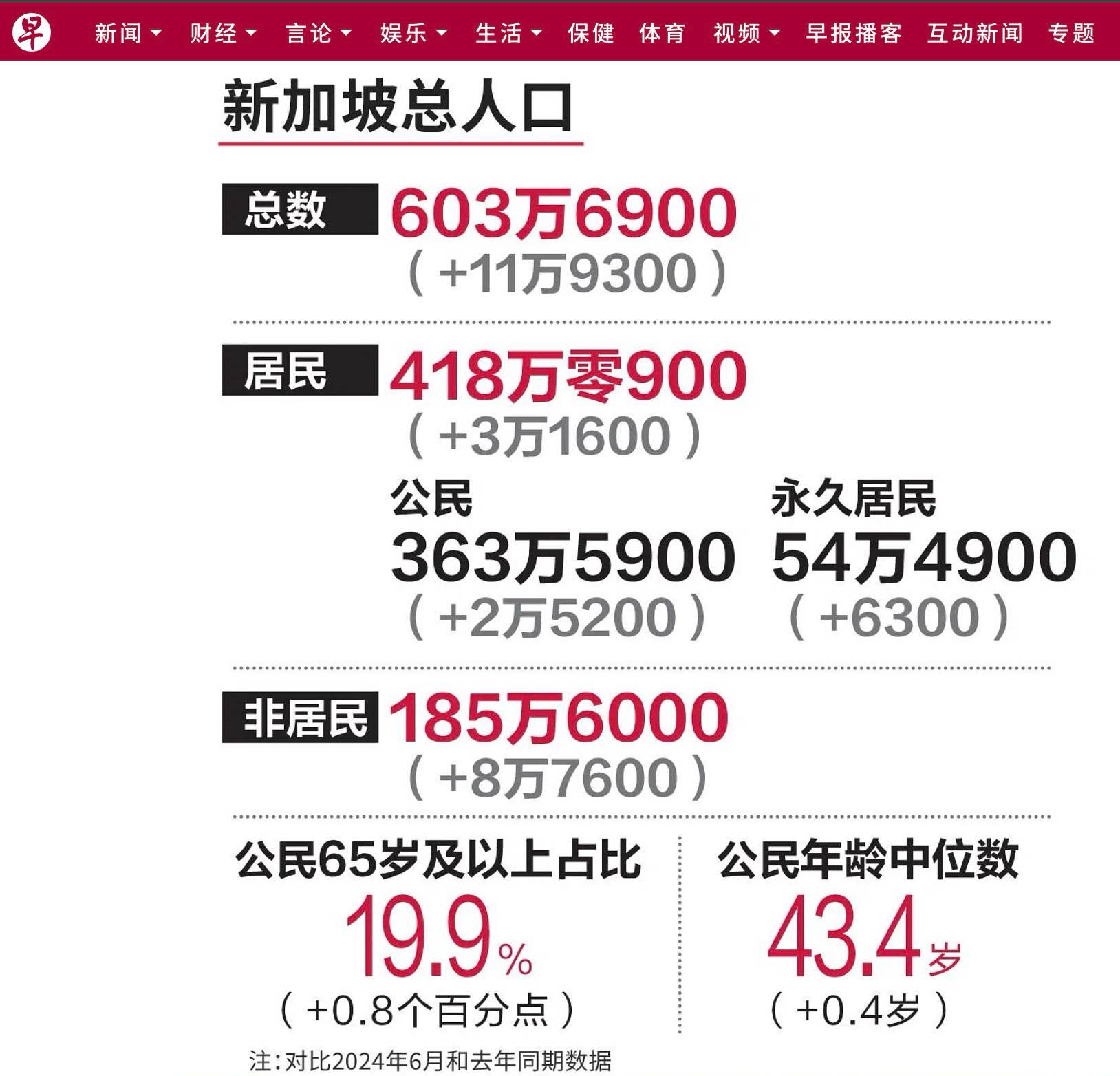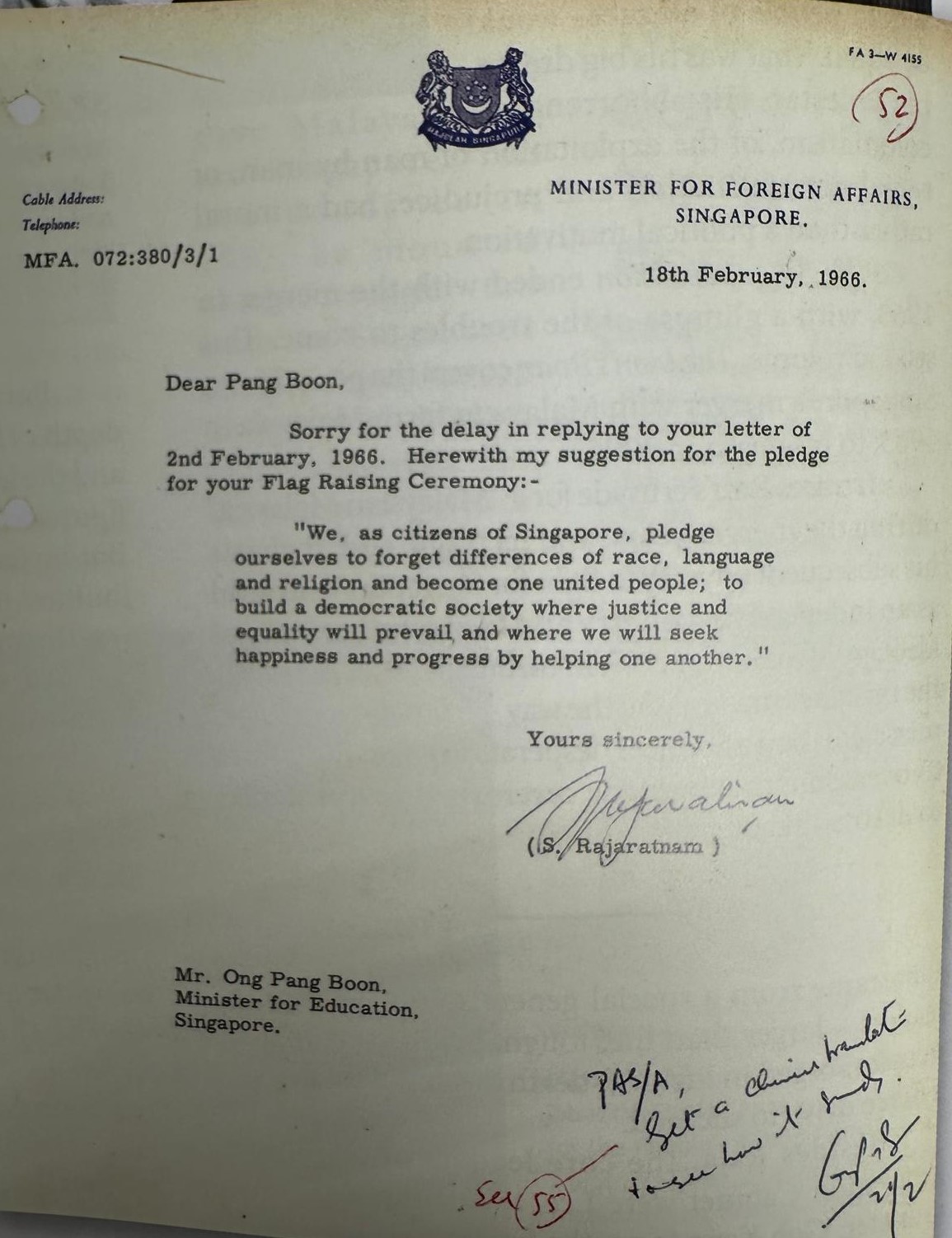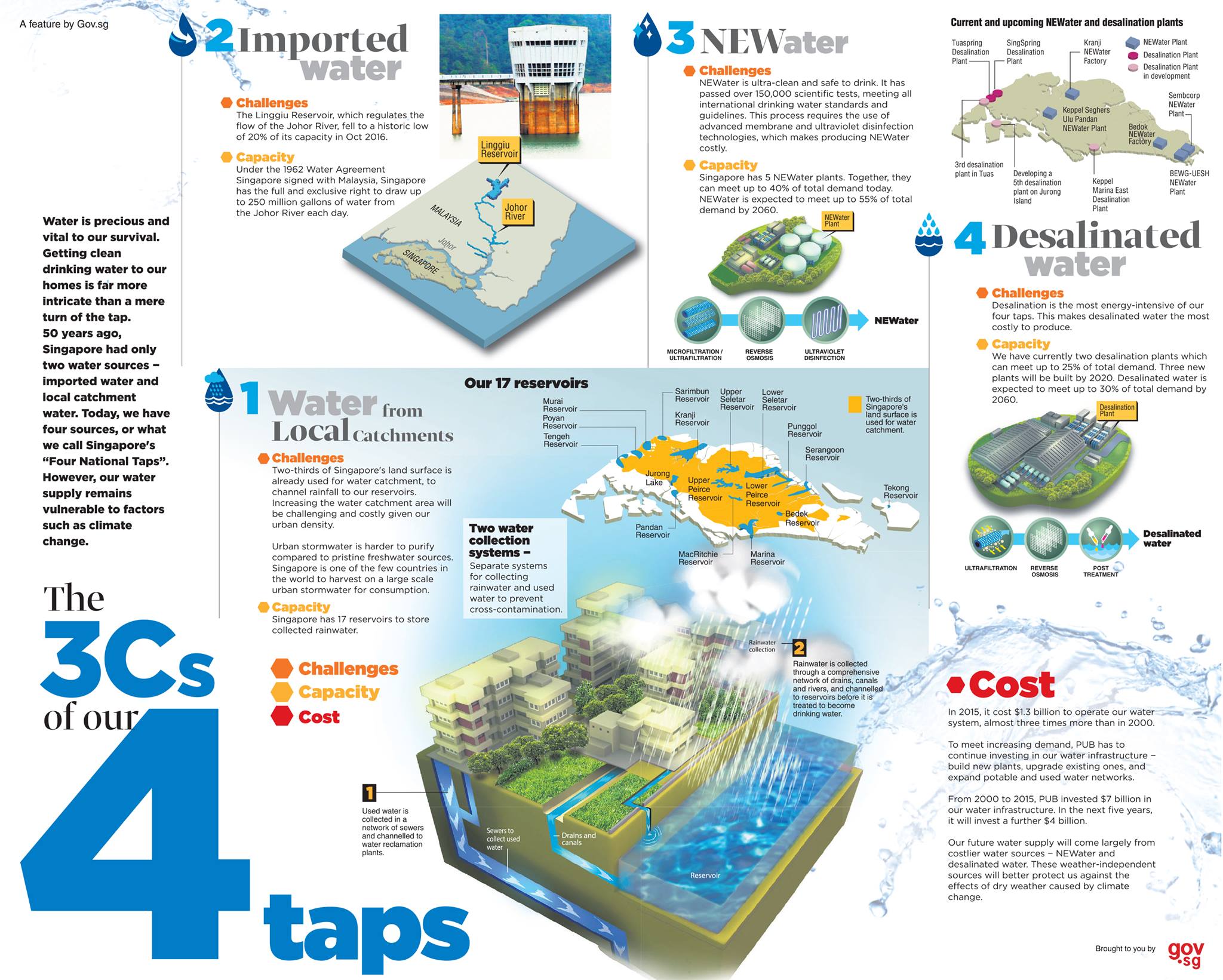SG LANDSCAPE & INFO

红色代表了平等与友谊,白色象征着纯洁与美德
有关五颗星星和同学们说个故事:台湾民进党,比较喜欢讲和平与公平。总结一下就是:“民进和公平”
新月-新建立的国家,五颗五角星代表了国家的五大理想: MJHKP 民主、和平、进步、公正、平等,
西长约50公里,南北宽约28公里,海岸线长228公里。
截至 2023 年,议会中有 **104 名议员**:
- 93 名民选议员+- 2 名非选区议员+- 9 名提名议员 = 104名
目前有 6 个空缺议席 :4 个来自人民行动党,2 个来自工人党。
目前共有 87 名议员 + 2 名非选区议员 + 9 名提名议员 = 共 98 名
Huángxúncái黄循财 /李智陞 lǐ zhì shēng
|
大自然中的城市
|
| URA STORY | HDB | EDB | STPB | JTC |
|
GEOG, POP AND ECONOMY & FUTURE TRENDS
|
| ROAD NAMES NAMES OF |
|
POPULATION
|
RESERVIORS
|
4 TAPS |
|
|
新加坡议会 | 三权分立 |
| bilio | |||
|
LITTLE RED DOT
|
|||
|
|
|||
|
||||||||||||||||||
|
地理数据
东西长约50公里,南北宽约28公里,海岸线长228公里。 全年温度在25° C (77° F)至31° C (88° F)之间。 ·从十二月到三月初,强降雨更频繁,是最潮湿的月份(东北季风季节), 这个国家被称为“花园城市”,将城市和自然环境融为一体, 拥有300多个公园、4个自然保护区和绿树成荫的街道、绿色建筑和垂直花园。
|
||||||||||||||||||||||||||||||||||||||||||||||||||||||||||||||||||||||||||||||||||||||||||||||||||||||||||||||||||||||||||||||||||||||||||||||||||||||||||||||||||||||||||||||
|
Singapore’s presidents Singapore
Presidents
46. President's Office, “Encik Yusof Ishak”; Lim, Chronicle
of Singapore, 107. |
||||||||||||||||||||||||||||||||||||||||||||||||||||||||||||||||||||||||||||||||||||||||||||||||||||||||||||||||||||||||||||||||||||||||||||||||||||||||||||||||||||||||||||||
Yusof Ishak1959 年 12 月 3 日,人民行动党 (PAP) 赢得 1959 年大选后,尤索夫接替威廉·古德爵士担任国家元首。 1965 年 8 月 9 日新加坡独立后,尤索夫被国会任命为新加坡第一任总统。 尤索夫曾任三届总统(其中两届是国家元首),后于 1970 年 11 月 23 日因心脏衰竭去世。1971 年 1 月 2 日,本杰明·薛尔斯继任。尤索夫在 1959 年至 1970 年间担任新加坡元首近 11 年,是新加坡在任时间最长的国家元首,直到 2010 年 8 月纳丹打破这一纪录。他的肖像出现在 1999 年推出的新加坡肖像系列纸币上。
|
Yusok Ishak
On 3 December 1959, Yusof succeeded Sir William Goode as Yang di-Pertuan Negara (English: Head of State) after the People's Action Party (PAP) won the 1959 general election. Yusof was subsequently appointed as the first president of Singapore by Parliament after the independence of Singapore on 9 August 1965. Yusof served three terms in office (2 as Yang-di Pertuan Negara) before he died on 23 November 1970 due to heart failure. He was succeeded by Benjamin Sheares on 2 January 1971. Serving as Singapore's Head of State for close to 11 years between 1959 and 1970, he was Singapore's longest-serving Head of State until S. R. Nathan surpassed this record in August 2010. His portrait appears on the Singapore Portrait Series currency notes introduced in 1999.
|
|||||||||||||||||||||||||||||||||||||||||||||||||||||||||||||||||||||||||||||||||||||||||||||||||||||||||||||||||||||||||||||||||||||||||||||||||||||||||||||||||||||||||||||
|
|
||||||||||||||||||||||||||||||||||||||||||||||||||||||||||||||||||||||||||||||||||||||||||||||||||||||||||||||||||||||||||||||||||||||||||||||||||||||||||||||||||||||||||||||
|
以下列出新加坡的历任总统。
|
||||||||||||||||||||||||||||||||||||||||||||||||||||||||||||||||||||||||||||||||||||||||||||||||||||||||||||||||||||||||||||||||||||||||||||||||||||||||||||||||||||||||||||||
|
|
||||||||||||||||||||||||||||||||||||||||||||||||||||||||||||||||||||||||||||||||||||||||||||||||||||||||||||||||||||||||||||||||||||||||||||||||||||||||||||||||||||||||||||||
|
(1) RACIAL Singapore's racial composition is highly diverse, reflecting its multi-ethnic society. As of the 2020 Census, the population breakdown is as follows:
The government maintains a racial harmony policy and promotes multiculturalism. Additionally, Singapore has an Ethnic Integration Policy (EIP), which ensures a balanced mix of ethnic groups within public housing estates (HDB flats) to foster social cohesion |
||||||||||||||||||||||||||||||||||||||||||||||||||||||||||||||||||||||||||||||||||||||||||||||||||||||||||||||||||||||||||||||||||||||||||||||||||||||||||||||||||||||||||||||
|
|
||||||||||||||||||||||||||||||||||||||||||||||||||||||||||||||||||||||||||||||||||||||||||||||||||||||||||||||||||||||||||||||||||||||||||||||||||||||||||||||||||||||||||||||
|
新加坡国旗由红、白两个平行相等的长方形组成,长宽比例为3:2 左上角有一弯白色新月以及五颗白色小五角星.
白色象征着纯洁与美德
五颗五角星代表了国家的五大理想: MHCKP 民主、和平、进步、公正、平等,
|
THE PLEDGE AND FLAG Meaning
A white crescent moon occupies the upper left red section. Next to
the moon are five white stars arranged in a circle. Red stands for universal brotherhood and equality of man. White symbolises pervading and everlasting purity and virtue. The crescent moon represents a young nation on the ascendant, and the five stars depict Singapore's ideals of democracy, peace, progress, justice and equality.
|
|||||||||||||||||||||||||||||||||||||||||||||||||||||||||||||||||||||||||||||||||||||||||||||||||||||||||||||||||||||||||||||||||||||||||||||||||||||||||||||||||||||||||||||
|
The National Pledge in Singapore's Four Official
Languages The OriginThe National Flag, Singapore's most visible symbol of statehood, reflects the ideals, beliefs and values of our nation. The creation of a new National Flag was therefore a vital task for Singapore’s newly elected Cabinet in 1959. Then Deputy Prime Minister Dr Toh Chin Chye was placed in charge of a committee to create a new flag to replace the British Union Jack, which had flown over the island for nearly 140 years from 1819 to 1959. Dr Toh had firm ideas about the design of the flag. There were to be five stars, which would stand for the five core principles of democracy, justice, peace, prosperity and equality. A crescent moon would serve to signify Singapore’s status as a young nation. To ensure that the flag would not be confused with those of other nations, Dr Toh studied the flags of countries represented in the United Nations and showed the Cabinet various designs for their consideration. He was initially not in favour of a red and white colour scheme, as he explained in an oral history interview with the National Archives of Singapore: "I had produced prototypes with different colours for the Cabinet to decide. I explained to them why we cannot use red and white, white and red. White above red is the flag of Poland. Red above white is the flag of Indonesia." Dr Toh Chin Chye, 1989 But after careful deliberations, the Legislative Assembly endorsed the red and white flag on 18 November 1959, together with the State Crest and National Anthem. The National Flag was unveiled on 3 December 1959 at the installation of the first Malayan-born Yang di-Pertuan Negara (Head of State), Encik Yusof bin Ishak. The ceremony was held in the City Hall Chambers. The Flag was publicly unveiled for the first time at the City Hall steps. The Flag was later adopted officially as Singapore’s National Flag upon her independence in 1965. |
||||||||||||||||||||||||||||||||||||||||||||||||||||||||||||||||||||||||||||||||||||||||||||||||||||||||||||||||||||||||||||||||||||||||||||||||||||||||||||||||||||||||||||||
|
|
||||||||||||||||||||||||||||||||||||||||||||||||||||||||||||||||||||||||||||||||||||||||||||||||||||||||||||||||||||||||||||||||||||||||||||||||||||||||||||||||||||||||||||||
|
WATER RESOURCES - 4 MAJOR TAPS
Reservoirs 17
Rivers 35
|
||||||||||||||||||||||||||||||||||||||||||||||||||||||||||||||||||||||||||||||||||||||||||||||||||||||||||||||||||||||||||||||||||||||||||||||||||||||||||||||||||||||||||||||
|
【新加坡6所公立大学】 向家长推销新加坡管理大学 (SMU)
和艺术学院 (SOTA) 的教育之旅需要强调这两所院校的优势和独特之处。以下是一些策略:
|
||||||||||||||||||||||||||||||||||||||||||||||||||||||||||||||||||||||||||||||||||||||||||||||||||||||||||||||||||||||||||||||||||||||||||||||||||||||||||||||||||||||||||||||
|
新加坡议会的议员人数可能因具体选举以及民选议员、非选区议员和提名议员的组成而异。以下是根据**2020 年大选**和**现行制度**进行的细分: 1. 总席位数** - **93 名民选议员**:代表选区,包括**单一选区 (SMC)** 和**集体代表选区 (GRC)**。 - **2 名非选区议员 (NCMP)**:未在其选区获胜但获得席位以确保更多样化代表性的反对党候选人。 - **9 名提名议员 (NMP)**:由总统根据推荐任命,通常不分党派,代表商业、学术或艺术等各个领域。
总计**: 本届议会开始时的初始议席数为 104 席, 其中工人党占 10 席,由毕丹星领导, 新加坡进步党占 2 席, 另外还有 9 席为提名议员。 2020 年新加坡大选共选出 93 名国会议员。 目前有 6 个空缺议席 : 4 个来自人民行动党, 2 个来自工人党。
本届议会是新加坡独立以来任期内空缺议席最多的一次,共有 6 个,其中包括以婚外情为由辞去议席的国会议长陈川仁,与他一同辞去议席的还有成丽辉、后来参加 2023 年新加坡总统大选的国务资政尚达曼和交通部长 S. Iswaran。工人党 Leon Perera 于 2023 年 7 月 17 日辞职。工人党 Raeesah Khan 于 2021 年 11 月 30 日辞职。 因此,目前共有 87 名议员 + 2 名非选区议员 + 9 名提名议员 = 共 98 名 The number of
Members of Parliament (MPs) in
Singapore's Parliament can vary depending on the specific election and
the composition of elected, non-constituency, and nominated MPs. Here's
a breakdown based on the **2020 General Election** and the **current
system**: Singapore's Parliament is the legislative branch of
the government, responsible for making laws, debating policies, and
representing the interests of Singapore's citizens. Here's an overview: |
||||||||||||||||||||||||||||||||||||||||||||||||||||||||||||||||||||||||||||||||||||||||||||||||||||||||||||||||||||||||||||||||||||||||||||||||||||||||||||||||||||||||||||||
| 新加坡的政府施行三权分立制度:1.立法、2.行政、3.司法三权独立运行且相互制约。 2020 年新加坡大选共选出 93 名国会议员。目前有 6 个空缺议席,其中 4 个来自人民行动党,2 个来自工人党。 本届议会是新加坡独立以来任期内空缺议席最多的一次,共有 6 个,其中包括以婚外情为由辞去议席的国会议长陈川仁,与他一同辞去议席的还有成丽辉、后来参加
2023 年新加坡总统大选的国务资政尚达曼和交通部长 S.
Iswaran。工人党 Leon Perera
于 2023 年 7 月 17 日辞职。工人党
Raeesah Khan 于 2021 年 11 月 30 日辞职。因
|
The government of Singapore implements the system of
separation of powers: 1. Legislation, 2. Executive, 3. Judiciary. The
three powers operate independently and restrict each other. The separation of powers has the function of checking and balancing each power organ, so as to prevent the abuse of any power. lànyòng The following briefly describes the overview of Singapore's legislation, administration and judiciary: Legislation Legislation Singapore was once a British colony. After gaining self-government in 1959, Singapore inherited the parliamentary government system left by the British government, which is the parliamentary system of Westminster in the United Kingdom. Its main feature is that the government is based on the will of the people, which is expressed by the people voting to elect representatives to the parliament. Since the will of the people is the basis of the parliament, the parliament is supreme. The parliament is the source of national power and the main legislative body. The Parliament of Singapore is the main legislative body of Singapore, with legislative power, budget approval (financial supervision) power and the power to supervise the government. It is composed of elected members of parliament and non-elected official members specially appointed by the president. There are 78 elected seats for elected members, including single-member constituency seats and group representation constituency seats. Official members are nominated by members of parliament, have the right to speak but not vote. They are all public servants who have made contributions to the country, as well as people in the fields of science, literature, business, profession or society. They represent the interests of various industries and communities. Presidential Council for the Rights of Minorities - This is appointed by the President on the recommendation of the Prime Minister. Its main responsibility is to provide advice or reports to Parliament or the government on racial or religious groups. Most bills must be submitted to the Council for review before being sent to the President for approval. The purpose of establishing the Council is to ensure that the laws enacted in Singapore treat the rights of all races fairly, without favoring any race or being unfair to any race. The initial number of seats at the beginning of this parliament was 104, of which the Workers' Party held 10 seats, led by Pritam Singh, the Singapore Progress Party held 2 seats, and there were 9 nominated members. A total of 93 members of parliament were elected in the 2020 Singapore general election. There are currently 6 vacant seats, 4 from the People's Action Party and 2 from the Workers' Party. This parliament has the most vacant seats in Singapore's term since independence, with a total of 6, including Speaker of Parliament Tan Chuan-Jin, who resigned his seat on the grounds of an extramarital affair. He also resigned with Cheng Lihui, Senior Minister Shanmugaratnam, who later participated in the 2023 Singapore presidential election, and Transport Minister S. Iswaran. Leon Perera of the Workers' Party resigned on July 17, 2023. Raeesah Khan of the Workers' Party resigned on November 30, 2021. Therefore, there are currently 87 MPs + 2 non-constituency MPs + 9 nominated MPs = 98 in total Executive The party that receives the majority of votes has the right to form the government. This is to select ministers from the MPs and organize the parliamentary cabinet, each minister manages a government department and reports to the Prime Minister who leads the government. The cabinet is to assist in administrative affairs through the country's civil servants. Therefore, the cabinet government and civil servants are the executors of the government's daily affairs and affairs. The Singapore Cabinet is the highest authority under the parliamentary government system. The president appoints the prime minister, and the prime minister appoints other ministers. It can be said that the cabinet is the most important department of national administration. Its main powers are to implement national policies and propose the formulation of laws. The president of Singapore does not have overall executive power. He only has restrictive executive powers, which are related to the use of treasury reserves and the appointment and removal of senior civil servants. In May 2024, Lawrence Wong took office as prime minister and formed a new cabinet. The main cabinet members include Prime Minister and Finance Minister Lawrence Wong, Senior Minister Lee Hsien Loong, Deputy Prime Minister and Minister of Trade and Industry Gan Kim Yong, Deputy Prime Minister Heng Swee Keat, Senior Minister and Coordinating Minister for National Security Teo Chee Hean, etc. The Cabinet includes the Prime Minister's Office, the Ministry of Social and Family Development, the Ministry of Culture, Community and Youth, the Ministry of Defence, the Ministry of Education, the Ministry of Sustainability and the Environment, the Ministry of Finance, the Ministry of Foreign Affairs, the Ministry of Health, the Ministry of Home Affairs, the Ministry of Communications and Information, the Ministry of Law, the Ministry of Manpower, the Ministry of National Development, the Ministry of Trade and Industry and the Ministry of Transport. Here is a question. Everyone knows that the President of Singapore must work in the Presidential Palace, so do you know where our Prime Minister works? Have you ever heard of the Prime Minister's Office? Answer: The Prime Minister of Singapore and his Prime Minister's Office are also in the Presidential Palace, that is, the President and the Prime Minister work together. Judiciary Judiciary and Judicial Institutions The judiciary in Singapore is mainly divided into two parts: the Supreme Court of Singapore It consists of the High Court and the Court of Appeal. The Supreme Court has extensive civil and criminal jurisdiction. The Court of Appeal is the final court in Singapore, that is, the last and highest court to which litigants can appeal. Singapore also has a High Technology Court, which is an affiliate of the Supreme Court and was established on July 8, 1995. Singapore is one of the first countries in the world to use high technology to try cases. Its courts have the most modern computers and audio-visual equipment. Litigants can present their cases through computers, that is, submit evidence; the audio-visual system also enables litigants to conduct cross-border agreements through television recordings, and overseas witnesses can also appear on the screen to testify through the computer audio-visual system of this court, without having to rush to Singapore to appear in court. Singapore's judicial system has been pushed forward to a high degree of computerization and modernization. Singapore Primary Court This court includes: 1. Local Court 2. Magistrate's Court 3. Family Court 4. Juvenile Court 5. Small Claims Court. In addition, Singapore also has other judicial institutions that specialize in handling legal disputes, including: 1. Land Acquisition Appeal Board - specializes in handling disputes involving applications for government compensation for land expropriation; 2. Industrial Arbitration Tribunal - it mainly adjusts the relationship between labor and capital in the industry, and acts as an arbitrator between labor and capital to achieve the purpose of industrial safety. It has the judicial power to confirm the specific agreement between labor and capital; 3. Islamic Court - it is a court that specializes in hearing Muslim affairs. Including divorce, child custody, maintenance, division of marital property, etc. Other civil courts in Singapore, including the High Court, have no jurisdiction or interference with the decisions of the Islamic Court; 4. Military Court - its main task is to judge the illegal acts of soldiers according to military law; 5. Singapore International Arbitration Center - it provides relevant services for international and domestic commercial arbitration and encourages the use of arbitration and mediation to resolve commercial disputes to avoid court litigation; 6. Strata Titles Board - it is mainly responsible for managing disputes over strata title real estate; 7. Copyright Tribunal - it mainly hears disputes over rights and obligations between copyright owners and copyright users. |
|||||||||||||||||||||||||||||||||||||||||||||||||||||||||||||||||||||||||||||||||||||||||||||||||||||||||||||||||||||||||||||||||||||||||||||||||||||||||||||||||||||||||||||
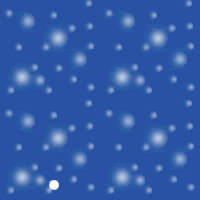




.jpg)

.jpg/120px-Lawrence_Wong_in_2024_(cropped).jpg)
.jpg/120px-Lee_Hsien_Loong_2016_(cropped).jpg)
.jpg/120px-Gan_Kim_Yong_-_2022_(cropped).jpg)

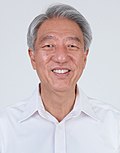

.jpg/120px-Vivian_Balakrishnan_-_2010_(cropped).jpg)






.jpg/120px-Josephine_Teo_September_2016_(29908295102).jpg)
.jpg/120px-Indranee_Rajah_in_Lecture_Theatre_B.2.17,_Block_B,_SIM_University,_Singapore_-_20150905-02_(cropped).jpg)
_(cropped).jpg/120px-Maliki_Osman_July_2018_(43440550432)_(cropped).jpg)



